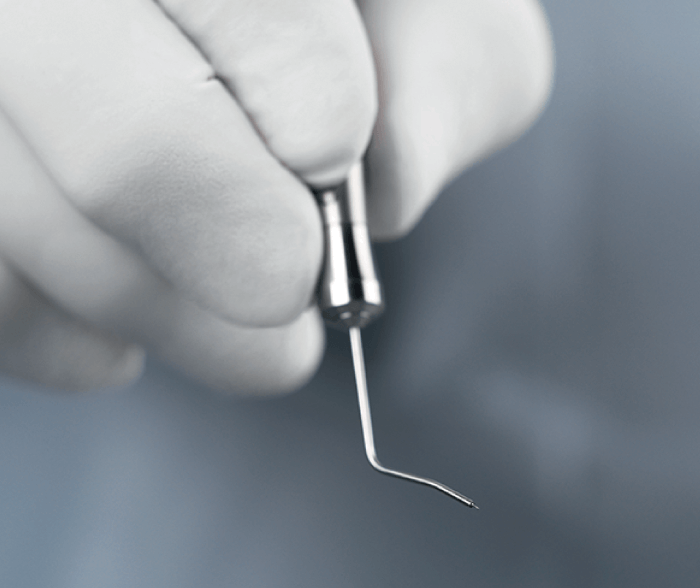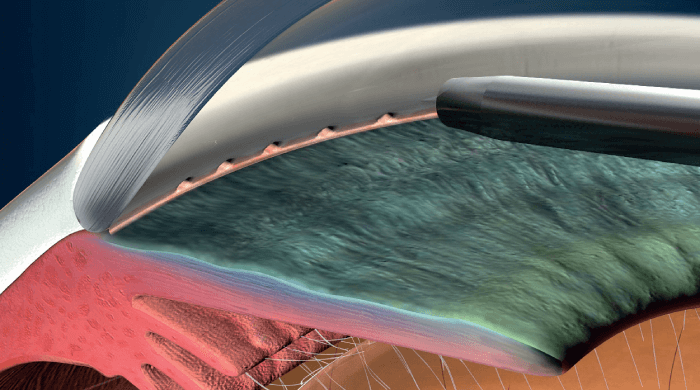
Swiss company Oertli is the only manufacturer in the ophthalmic field offering solutions for cataract, retinal, and glaucoma treatments in one surgical platform. Now, the company presents its High Frequency Deep Sclerotomy (HFDS®) – an implant-free, minimally invasive ab interno procedure to treat open angle glaucoma – to give all surgeons operating with Oertli surgery platforms an effective, efficient glaucoma option.
HFDS is a reliable procedure with proven long-term (six years) efficacy in lowering IOP and reducing antiglaucoma medications (1), partly or fully releasing patients from the topical therapy burden. What’s more, further surgical glaucoma interventions are possible without any restrictions, because HFDS technology doesn’t affect the episcleral or conjunctival tissue (2).
Curious about how HFDS works? It is based on diathermy, using electrically induced heat or high-frequency electromagnetic arcs to improve aqueous humor outflow. The reusable glaucoma tip operates via high-frequency diathermy to cut six pockets into the iridocorneal angle, where the highest outflow resistance in the trabecular meshwork is addressed. The tip itself is 1 mm long, which supports the outflow of aqueous humor through the trabecular meshwork and Schlemm’s canal, where the intrascleral collector channels dock directly.
The procedure’s success is based on the principle that, in glaucoma, the juxtacanalicular connective tissue of the trabecular meshwork is the site of the greatest pathological outflow resistance. The surgery bypasses the trabecular meshwork, creating a series of scleral pockets to encourage intrascleral filtration similar to that achieved with deep sclerotomy. The ab interno approach and the lack of subconjunctival filtration are aimed at considerably reducing the risks of intraoperative complications and subsequent bleb-related filtration complications (3).
How do surgeons see HFDS? In the words of Lutz Blomberg, who practices at the Augenzentrum Hildesheim-Alfeld-Bockenem in Hildesfeld, Germany, “The HFDS is a low-complication and low-risk MIGS technique without implant. This has the great advantage of less follow-up care and no unpleasant surprises due to implant dislocation or endothelial cell loss after years.” Manuel Jose Justiniano, specialist at Clínica de Ojos Norte in Santa Cruz de la Sierra, Bolivia, wholeheartedly agrees. “HFDS is, in my opinion, one of the best MIGS methods with a low complication rate, particularly compared to other existing filtering procedures with their known high complication rates.”
The practice of combining procedures for patients with cataracts who suffer from glaucoma is well known – it saves time and money, allowing patients to improve their visual acuity while simultaneously lowering their IOP. HFDS is a viable option that allows surgeons to perform combined procedures without concerns about safety or efficacy. Bojan Pajic, Professor of Ophthalmology at the Augenklinik ORASIS in Reinach, Switzerland, comments on using HFDS in combination with cataract surgery: “HFDS is a minimally invasive procedure with a very good safety profile that has been established for many years. Unlike other minimally invasive procedures, no implant remains in the eye. The surgical method addresses the actual problem – a need to improve the aqueous humor outflow. Should another glaucoma operation be required, this is possible after HFDS without any limitations. Cataract patients with glaucoma benefit from the option to combine procedures.”
The HFDS glaucoma solution has received the CE mark and is optionally available with all three surgery platforms from Oertli. Download the compendium now for further details.

References
- B Pajic et al., “New minimally invasive, deep sclerotomy ab interno surgical procedure for glaucoma, six years of follow-up,” J Glaucoma, 20, 109 (2011). PMID: 20520572.
- MMI Abushanab et al., “The efficacy and safety of high-frequency deep sclerotomy in treatment of chronic open-angle glaucoma patients,” Biomed Res Int, 2019, 1850141 (2019). PMID: 31828092.
- B Pajic et al., “A novel technique of ab interno glaucoma surgery: follow-up results after 24 months,” Graefes Arch Clin Exp Ophthalmol, 244, 22 (2006). PMID: 16028025.
